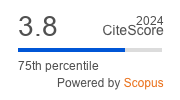Article | Open Access
“So Connected yet so Distant”: Integrated Sanitation Action in Campinas to Meet the SDGs
| Views: | 639 | | | Downloads: | 932 |
Abstract: Research shows that improving sanitation brings wide‐ranging benefits across multiple sectors, contributing not only to the success of UN Sustainable Development Goal (SDG) 6—focused on clean water and sanitation—but also to the broader objectives of the 2030 Agenda. However, many people living in Brazil’s urban areas still lack adequate sanitation and essential services, with these deficiencies being especially prevalent in informal settlements. This article is an output from a participatory research project that explored the links between sanitation and the SDGs, which focused on the municipality of Campinas in São Paulo state with an emphasis on informal settlements because they are disproportionately affected by service provision inadequacies. Findings highlight multiple synergies between sanitation action and the achievement of targets across SDGs, whereby residents are likely to experience wide‐ranging benefits from adequate sanitation. They further point to the need for multi‐sectoral, participatory, and context‐specific policies, plans, and interventions to overcome interconnected risks associated with inadequate sanitation. The authors advocate for a transdisciplinary approach to dealing with complex societal problems and conclude by presenting opportunities for integrated policies and action across key stakeholders. The article further offers valuable reflections and lessons learned for how we approach development and engage with complex challenges post‐2030.
Keywords: Brazil; informal settlements; participatory research; sanitation; São Paulo; sustainable development goals
Published:
© Pascale Hofmann, Lourenço Capriglione, Tathiana Chicarino, Elcires Pimenta. This is an open access article distributed under the terms of the Creative Commons Attribution 4.0 license (http://creativecommons.org/licenses/by/4.0), which permits any use, distribution, and reproduction of the work without further permission provided the original author(s) and source are credited.


